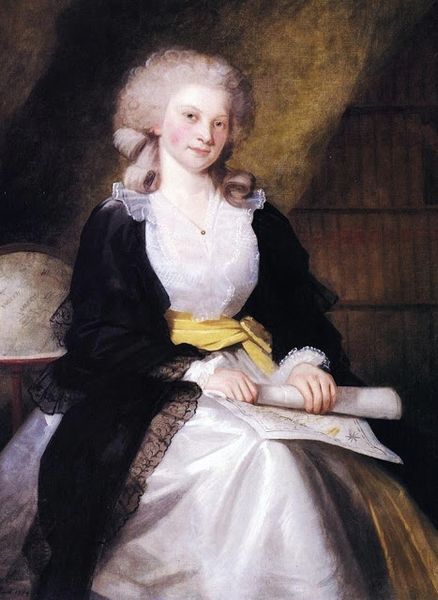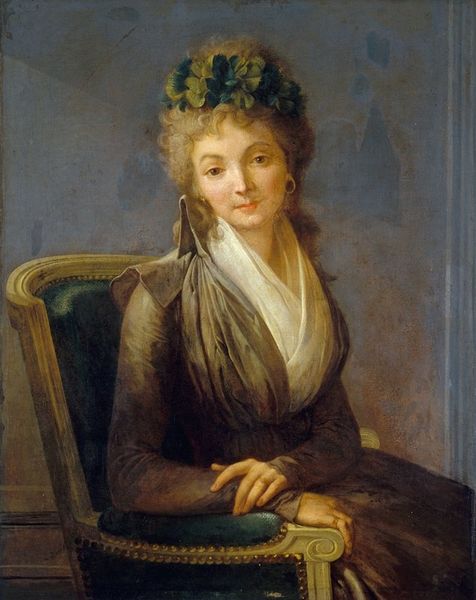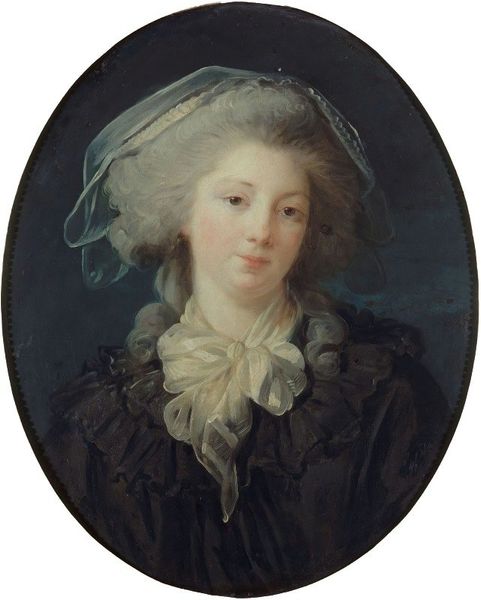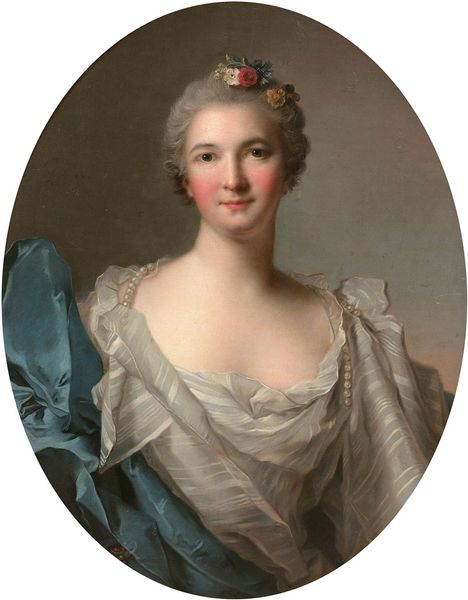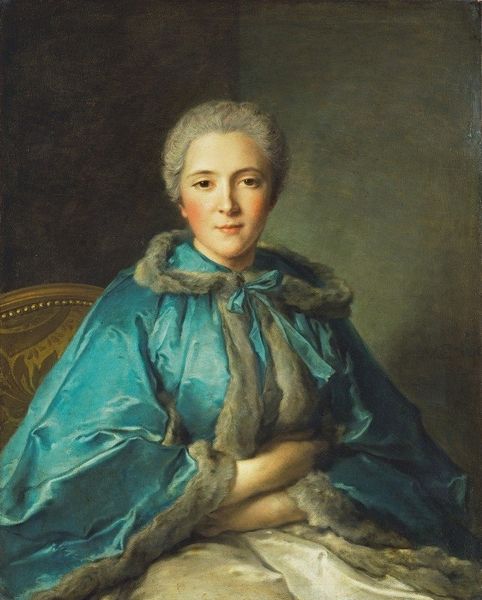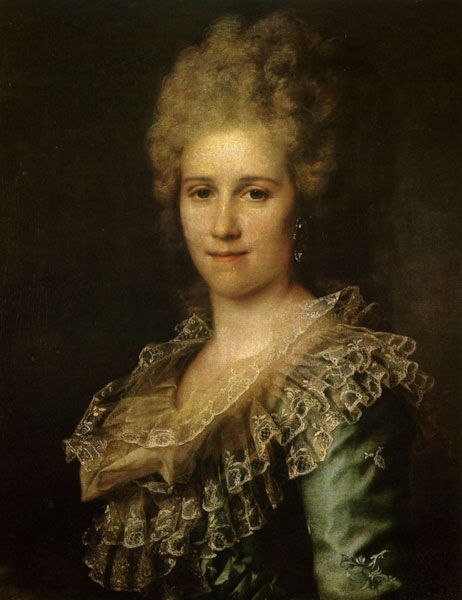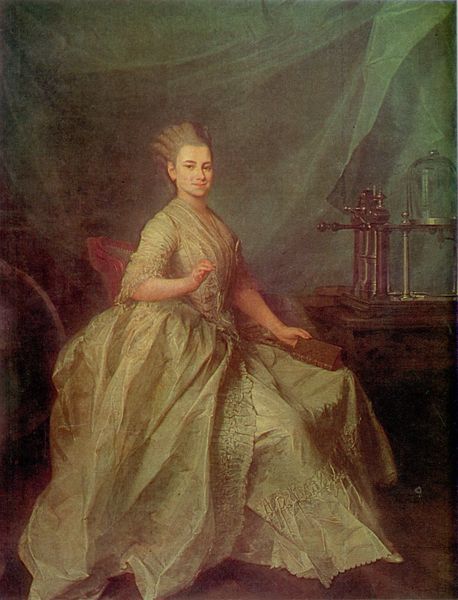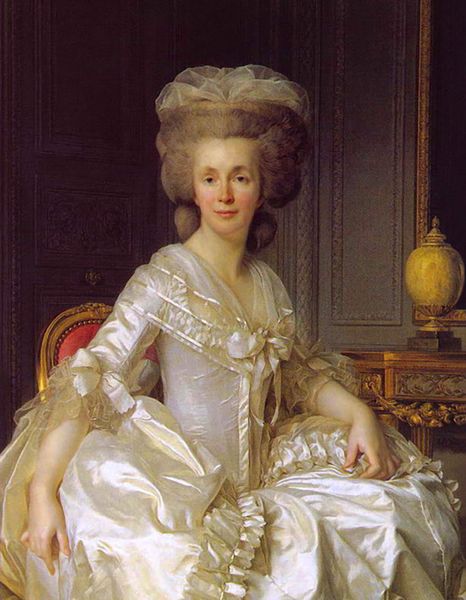
Portrait of Anne Marie Louise Thélusson, Countess of Sorcy 1790
0:00
0:00
jacqueslouisdavid
Neue Pinakothek, Munich, Germany
painting, oil-paint
#
portrait
#
neoclacissism
#
painting
#
oil-paint
#
female-portraits
Dimensions: 129 x 97 cm
Copyright: Public domain
Editor: This is Jacques-Louis David’s 1790 "Portrait of Anne Marie Louise Thélusson, Countess of Sorcy," painted in oil. The simplicity of her white dress strikes me, almost as if it anticipates later fashions. What can you tell me about it? Curator: Let's look closely at the materials. Consider the stark white of that dress—it's neoclassical restraint, certainly. But what is being restrained? It signifies a particular construction of femininity linked to consumption and class. That almost aggressively simple white necessitates constant upkeep, demanding resources—labor in washing, starching, repairing... It becomes a potent symbol of conspicuous leisure. Editor: So the dress itself is a statement beyond just being a pretty garment. The material signifies a lack of manual labour? Curator: Precisely. And consider that patterned shawl. It adds another layer. Where was it made? What materials? Those designs, although elegant, also imply access to global trade networks built on complex and often exploitative labor practices. It wasn’t just taste, but production systems that enabled such accoutrements. Editor: I hadn't considered how the materials themselves point to those networks! So, even in what appears to be a straightforward portrait, David subtly embeds cues about material production and consumption. Curator: Exactly. The portrait becomes a stage for examining the economics of status. These weren't simply aesthetic choices but reflections, sometimes unconscious, of social structures. What we often consider a display of individual beauty is heavily reliant on labour systems of the time. Editor: That shifts how I understand portraits of the era. It encourages a focus on class, commodity exchange, and globalization of production through something like a piece of clothing. Thank you for providing a lens to analyze art from this new perspective! Curator: My pleasure! By focusing on materiality, we unearth complex social and economic dimensions typically hidden in art history.
Comments
No comments
Be the first to comment and join the conversation on the ultimate creative platform.

